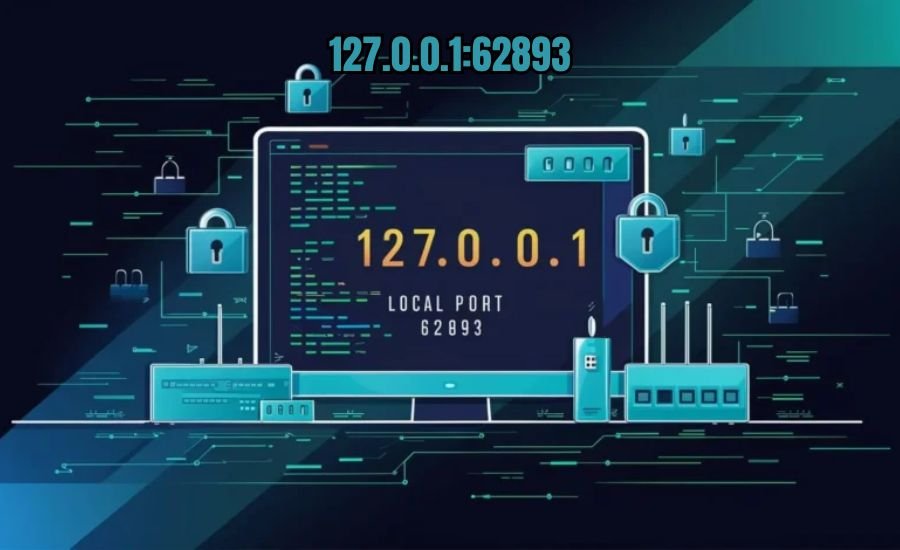In today’s fast-paced development environment, every second counts. As a developer, having the ability to test and troubleshoot your applications locally is one of the most powerful tools in your toolkit. If you’re familiar with local development, you’ve likely encountered 127.0.0.1:62893. This seemingly simple yet powerful address plays a pivotal role in ensuring that web applications run smoothly in the testing phases, helping developers troubleshoot quickly without relying on external servers. At TECH DENSER, we are dedicated to helping developers understand and make the most of these essential tools. In this article, we will explore everything you need to know about 127.0.0.1:62893, how it works, its importance in the development process, and how you can make it work for you.
What is 127.0.0.1:62893?
Let’s start by understanding what 127.0.0.1:62893 is and how it fits into your development workflow.
127.0.0.1 is known as the loopback IP address or localhost. When you use this address, you’re telling your computer to talk to itself, and it doesn’t need to communicate with any external network. Think of it like sending a letter to yourself to check if your postbox is working correctly. This is great for testing because you can simulate network communication without the need for an internet connection.
The :62893 part refers to a specific port on your local machine. Port 62893 is often used for temporary or dynamic connections, meaning it’s commonly assigned by your operating system when you run a server or application locally. For example, a web application might be configured to run on 127.0.0.1:62893, which means it can only be accessed from your machine and not from others over the internet.
Why is 127.0.0.1:62893 Important for Developers?

Now that we know what it is, let’s dive into why 127.0.0.1:62893 is essential for developers, especially when building and testing web applications.
1. Quick Testing in a Safe Environment
The primary advantage of using 127.0.0.1:62893 is that it allows you to test your application in a completely controlled environment. When you run a service on 127.0.0.1:62893, it means that the server is only accessible from your own computer. This is crucial during the development phase because it allows you to test the application without any risk of exposing it to the public or interfering with live servers.
By using 127.0.0.1:62893, you can troubleshoot and debug your application safely, ensuring that everything functions as expected before you make it publicly accessible.
2. Increased Development Speed
Working locally on 127.0.0.1:62893 can dramatically speed up your development cycle. You can quickly make changes to your application, test them instantly, and identify issues in real time without worrying about waiting for changes to propagate over a remote server. This fast feedback loop is essential for agile development, where quick iterations lead to faster product delivery.
3. Cost-Effective Solution
Another benefit is that 127.0.0.1:62893 allows you to test without the need for an active internet connection or reliance on external servers, which can save both time and resources. By testing locally, you avoid any potential costs associated with hosting or deploying to staging servers. This also eliminates the risk of incurring unexpected costs due to misconfigured production servers.
How Does 127.0.0.1:62893 Work?
Let’s break down how 127.0.0.1:62893 works in practice.
When you make a request to 127.0.0.1:62893, the request is routed through the loopback interface, which sends the data back to your machine. This process doesn’t involve any external network traffic.
- Localhost Communication: Any request to 127.0.0.1 gets routed back to your own computer, which means your web browser or application will think it’s communicating with an external server, but in reality, it’s just communicating with itself.
- Port Communication: The port number (62893) is the specific entry point for this communication. Your operating system dynamically assigns ports within a range (49152 to 65535) for temporary connections. This allows developers to run multiple services simultaneously without any conflict.
- Virtual Network Interface: Your operating system handles the loopback interface, which essentially means that when you send a request to 127.0.0.1:62893, the data never leaves your computer but is instead processed internally by the system.
This mechanism is crucial for testing applications locally before deploying them to a live environment. It simulates how the application will behave in a production scenario, all within the comfort of your development machine.
Common Uses of 127.0.0.1:62893 in Development
1. Testing Web Servers Locally
When you’re building a web application, one of the first steps is to test how the application behaves in different network environments. By running your app on 127.0.0.1:62893, you can test the web server’s functionality locally without worrying about any external exposure. For example, using 127.0.0.1:62893 as the base address for your local web server allows you to simulate how it will perform once deployed on a live server.
2. Debugging Applications
Developers use 127.0.0.1:62893 when they want to debug or troubleshoot their applications. This port can serve as a temporary endpoint for your app to make sure it’s running as expected. If you encounter any issues, you can resolve them without impacting users or production servers.
3. Running APIs Locally
If you’re developing an API, you can run it on 127.0.0.1:62893 to test the API calls. This ensures that your API functions correctly in a secure environment, and you can check responses and troubleshoot without worrying about public access.
I hope this is useful to you: 972982096
Troubleshooting Common Issues with 127.0.0.1:62893

While 127.0.0.1:62893 is a helpful tool, there are some common issues developers may face.
1. Service Not Running on Port 62893
If you attempt to access 127.0.0.1 62893 but encounter a connection error, it’s possible that the service on this port hasn’t started yet.
Solution: Check if your application or server is running correctly. You can use terminal commands like netstat to ensure that the port is in use.
2. Port Conflict
Sometimes, 127.0.0.1:62893 may be used by another service, resulting in a conflict.
Solution: If you suspect a conflict, change the port number in your application’s configuration or stop the conflicting service.
3. Firewall Issues
In some cases, your local firewall might block access to port 62893, preventing proper communication.
Solution: Ensure your firewall isn’t blocking the port. You can temporarily disable it for testing purposes or configure it to allow access to the port.
Best Practices for Using 127.0.0.1:62893 in Development
To make the most of 127.0.0.1:62893, here are a few best practices:
- Use Specific Ports for Different Services: For better organization, assign a specific port number to each local service or application. This prevents conflicts and makes it easier to track services.
- Secure Your Local Environment: Even though 127.0.0.1 is only accessible locally, it’s still important to secure your local services. Implement firewalls and password protections to prevent unauthorized access during testing.
- Monitor Traffic: Use tools like Wireshark or Fiddler to monitor the network traffic to and from 127.0.0.1:62893. This helps you catch any unexpected issues or unauthorized connections.
Conclusion
In conclusion, 127.0.0.1:62893 is an indispensable tool for any developer looking to streamline their development and testing processes. By leveraging the power of the localhost and dynamic ports, developers can ensure that their applications are functioning as expected without worrying about external factors. Whether you’re testing a web server, debugging code, or running APIs, 127.0.0.1:62893 provides the perfect environment for building secure, high-performing applications.
By understanding how 127.0.0.1 62893 works and following best practices, you can significantly enhance your development workflow. Make sure to monitor your services, troubleshoot issues effectively, and keep your testing environment secure to get the most out of this powerful tool.
FAQs
Q: How do I know if my application is using 127.0.0.1:62893?
A: You can check the configuration files of your application or use network tools like netstat to see if the service is listening on this port.
Q: Can I use 127.0.0.1:62893 for production services?
A: 127.0.0.1:62893 is primarily for local development and testing. For production, you’ll want to use a public IP address or domain.
Q: What if I encounter issues with 127.0.0.1:62893 not working?
A: Double-check your firewall settings, ensure the service is running, and verify that there’s no port conflict with other applications.
Stay in touch to get more updates on TECH DENSER




